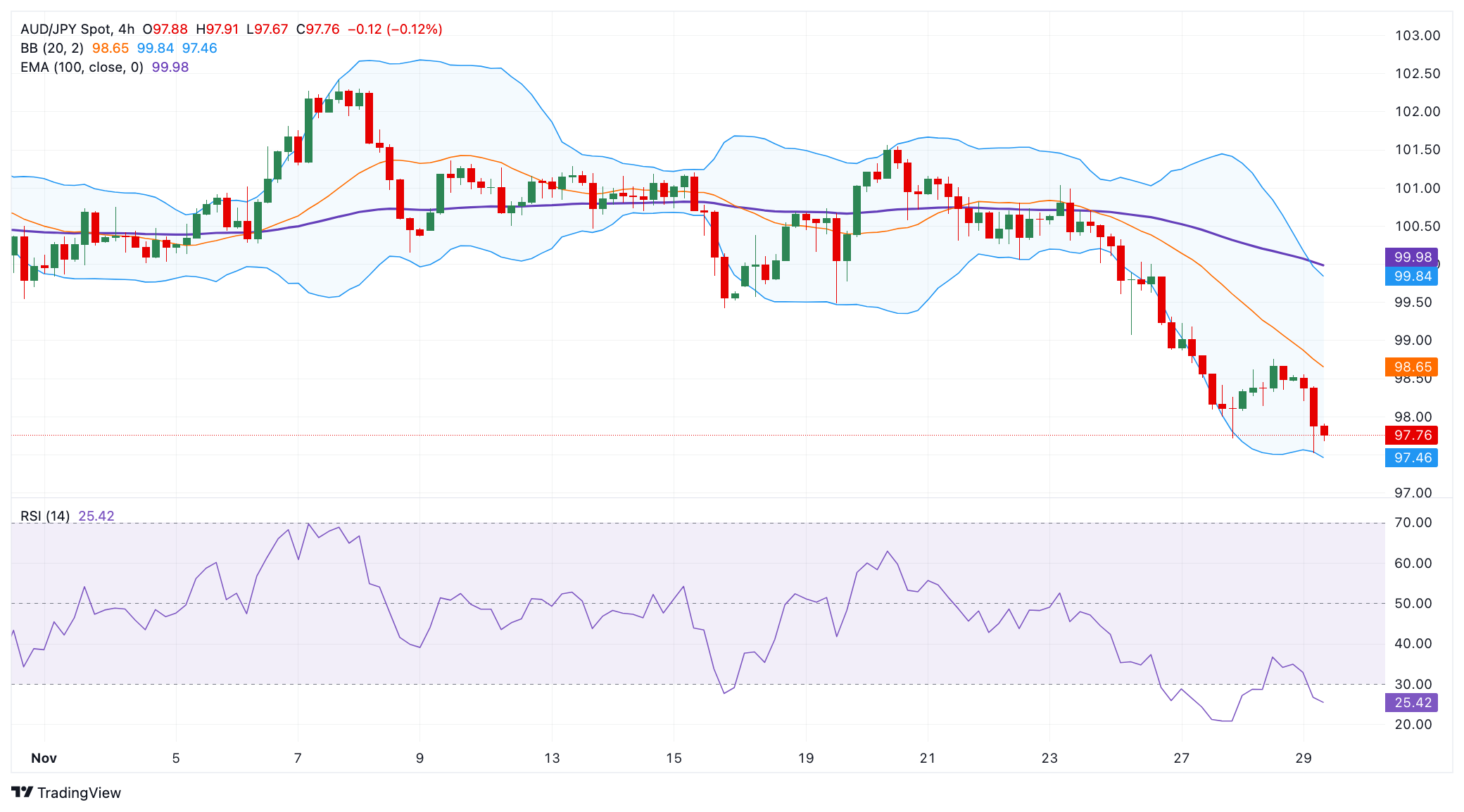- AUD/JPY falls near 97.75 in the early European session on Friday, losing 0.73% on the day.
- The negative outlook for the cross remains in place, but further consolidation cannot be ruled out amid the oversold condition of the RSI.
- The first downside target to watch is 97.45; The immediate resistance level is seen at 98.76.
The AUD/JPY cross attracts some sellers around 97.75 during the early European trading hours on Friday. The Japanese Yen (JPY) gains momentum after data released on Friday showed Japan’s Tokyo Consumer Price Index (CPI) accelerated for the first time in three months, supporting the case for another interest rate hike. by the Bank of Japan (BoJ) in December.
According to the 4-hour chart, the AUD/JPY bearish sentiment remains intact as the cross remains below the key 100 EMA. The downward momentum is supported by the Relative Strength Index (RSI), which is below the midline. However, the oversold condition of the RSI indicates that further consolidation cannot be ruled out before positioning for any short-term depreciation in AUD/JPY.
The initial support level for the crossover emerges near the lower boundary of the Bollinger Band at 97.45. Further south, the next level of containment is seen at 96.60, the September 4 low. The additional downside filter to watch is 96.00, the September 19 low and psychological level.
On the positive side, the first bullish barrier for the crossover lies at 98.76, the November 28 high. Any follow-up buying above this level could pave the way towards the round 99.00 mark. Further north, the next hurdle is seen at 99.49, the November 19 low. The psychological level of 100.00 seems to be a tough nut to crack for the bulls.
AUD/JPY 4-hour chart
The Japanese Yen FAQs
The Japanese Yen (JPY) is one of the most traded currencies in the world. Its value is determined broadly by the performance of the Japanese economy, but more specifically by the policy of the Bank of Japan, the differential between the yields of Japanese and US bonds or the risk sentiment among traders, among other factors.
One of the mandates of the Bank of Japan is currency control, so its movements are key for the Yen. The BoJ has intervened directly in currency markets on occasion, usually to lower the value of the Yen, although it often refrains from doing so due to the political concerns of its major trading partners. The BoJ’s current ultra-loose monetary policy, based on massive stimulus to the economy, has caused the depreciation of the Yen against its main currency pairs. This process has been exacerbated more recently by a growing policy divergence between the Bank of Japan and other major central banks, which have opted to sharply raise interest rates to combat decades-old levels of inflation.
The Bank of Japan’s ultra-loose monetary policy stance has led to increased policy divergence with other central banks, particularly the US Federal Reserve. This favors the widening of the spread between US and Japanese 10-year bonds, which favors the Dollar against the Yen.
The Japanese Yen is often considered a safe haven investment. This means that in times of market stress, investors are more likely to put their money in the Japanese currency due to its supposed reliability and stability. In turbulent times, the Yen is likely to appreciate against other currencies that are considered riskier to invest in.
Source: Fx Street
I am Joshua Winder, a senior-level journalist and editor at World Stock Market. I specialize in covering news related to the stock market and economic trends. With more than 8 years of experience in this field, I have become an expert in financial reporting.








